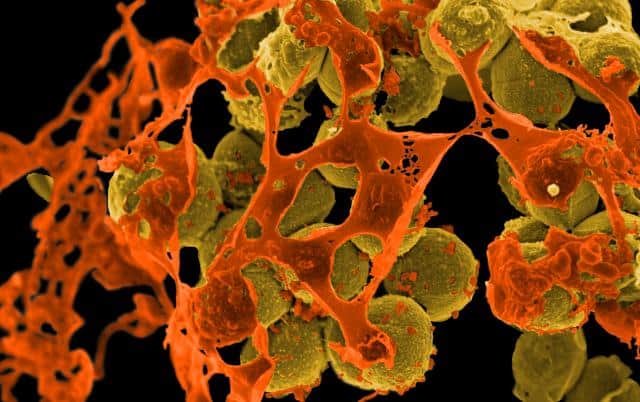February 01, 2017

Methicillin-resistant Staphylococcus aureus (MRSA) was first described in the 1960s, shortly after the introduction of methicillin. Initially it only infected patients in hospitals, nursing homes or other health-care settings. But in the 1990s a new variant began spreading and rapidly became a major source of infection in the community and in healthcare institutions. These strains cause significant morbidity and mortality around the globe and are targets for infection control and prevention.
The arc of MRSA prevalence in the United Kingdom illustrates the power of public policy interventions to slow the spread of antibiotic-resistant bacteria. Depicted in this graphic generated from CDDEP’s ResistanceMap, the rising rate of MRSA bloodstream infections (BSIs), which peaked at 47 percent in 2001 and 2002, led to the introduction of new policies intended to control it. In 2001, the U.K. National Health Service (NHS) introduced mandatory—replacing voluntary—MRSA bloodstream reporting. They also provided national reporting targets to motivate healthcare providers to reduce infections. A “cleanyourhands” campaign was launched in conjunction with the MRSA/Cleaner Hospitals Improvement Programme in order to improve hand hygiene and promote infection control in hospitals.

These interventions triggered a small decline in U.K. MRSA infection rates. However, the slow pace of the decline led to further national infection prevention measures. These included:
· Targets to reduce MRSA BSI cases by 50 percent
· An extension of the “cleanyourhands” campaign
· Enhanced mandatory reporting of all MRSA cases
· Deployment of post-infection review teams
Following the implementation of these policies, MRSA resistance rates fell dramatically. The mandatory targets to halve the number of cases were exceeded in 2008, and in 2014 rates of U.K. MRSA were at their lowest point since reporting began, at 11 percent.
Contrast this with MRSA’s trajectory in the United States, which took no definitive steps to either recognize the rising tide of MRSA or to change practices to control it.
Anna Trett is a Research Analyst at CDDEP.
ResistanceMap, a web-based collection of data visualization tools developed by CDDEP, allows interactive exploration of antimicrobial resistance and antibiotic use trends across the globe. With a recent update, ResistanceMap now includes antibiotic consumption data from 75 countries and resistance data from 49 countries, including the United States, Canada, more than 30 European countries and an expanding number of low- and middle-income countries.
References:
https://www.gov.uk/government/collections/staphylococcus-aureus-guidance-data-and-analysis
http://jac.oxfordjournals.org/content/63/5/849.full.pdf+html











